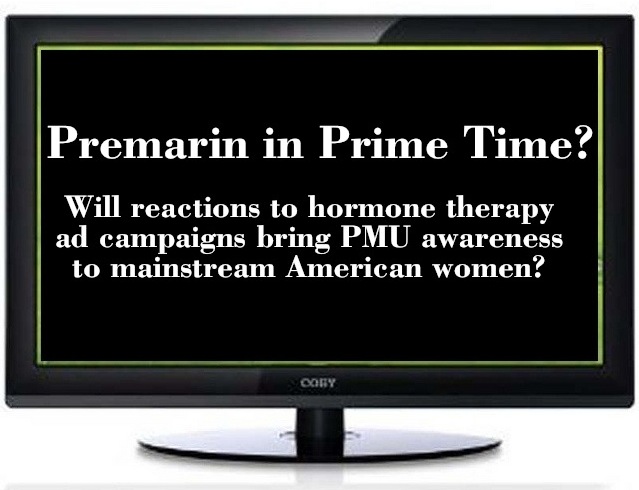
At first, I was shocked by what I heard on the commercial’s voiceover. Really, on television? That subject? Then I realized what product was being advertised.
This was about horses, not just about women, although the horses would be as unmentioned as this topic has traditionally been.
When it came on a second time, 20 minutes later, I was just plain speechless. By the time the movie was over, I knew the commercial by heart.
It was a rare night off at home. I could stretch out of the couch and watch a mindless movie on the Hallmark channel. Or I would have been able to, except for the countless ads for Premarin Cream.
I ended up spending the rest of the night on my iPad, trying to figure out what was going on.
In spite of all the bad publicity and warnings about hormone replacement therapy, Premarin continues to be one of the most prescribed medications in the United States. The estrogen replacement, as most readers by now will know, is made from the urine of pregnant mares kept in stalls so that their urine can be hosed into tanks for collection and transfer to drug labs for processing.
Whether or not you are familiar with the pros and cons of hormone replacement therapy and agree or disagree with the concept of pregnant mare farms, please watch this short news video from Minnesota, with comments from Dr. Tracy Turner of Anoka Equine, also in Minnesota.
Most of the horse industry in the United States came together to register a range of negative reactions to the idea of keeping pregnant mares hooked up to urine collection hoses for five months a year. While veterinary inspectors, including an ethical team from the American Association of Equine Practitioners, found no welfare standard concerns, most members of the public admitted to feeling vaguely uncomfortable about the process, while others were outraged.
An interesting note to this is that, according to a Harvard Medical School report, the first commercial HRT medications were made from the urine of pregnant women. It wasn’t until the 1940s that Ayerst Laboratories in Canada figured out how to collect the urine of pregnant mares and extract the precious estrogen.
A stunning fact from Harvard: “By 1992 Premarin was the nation’s most widely prescribed drug.”
And then there were the by-products: hundreds of foals born each year, most of whom seemed doomed to the equine slaughter system. Rescues and fundraisers across the country sponsored the foals and many people are proudly riding them today, and continue to tell how these horses came to be. But in the midst of the “unwanted horse” crisis, the PMU by-product foals were a separate entity to themselves.
What didn’t happen was for the horse world’s varying levels of ethical discomfort with the plight of the mares to translate to awareness in the general public. Few medical doctors knew the source of Premarin, which meant that patients were uninformed what was in their medication, or offered a choice.
It wasn’t pro-horse activists who scared off American women from Premarin use. It was bad publicity over the reportedly high incidence of heart disease, deep vein thrombosis and stroke in women who had taken HRT, following publication of the Women’s Health Initiative, a wide study of women’s health.
A few years later, we heard that those reports had been exaggerated, that HRT wasn’t so dangerous after all, considering its benefits. American women were confused, but they were also looking for a solution to their menopause problems. Sure, plant-based and synthetic HRT was an option but the FDA hasn’t approved those medications.
Premarin now is being heavily promoted in topical form, and the ads are pretty explicit about what the topical cream is used for. It’s the sort of commercial that you’d hope children wouldn’t see or hear. But you know they do.
There is still no mention that this is an animal-based product, other than a warning that people who are allergic to animals should not use Premarin.
It’s interesting to note that the patent on Premarin has expired, but that there is no evidence of a flood of new PMU-based products. Nor is there a generic version of Premarin available to women.
Nor is there a flood of reaction to the commercials, either for the explicit sexual language or for the nature of the product and how the raw material is sourced. Maybe I’m the only woman in America who actually watches the commercials on television.
I can’t believe that I am the only woman in American who cares.
To avoid offending readers, the Premarin commercial is not shown in the blog today. You can view it here: http://www.ispot.tv/ad/7GLJ/premarin








